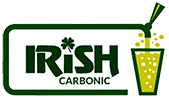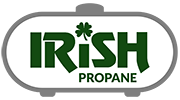

A COVID-free Halloween may be witch-ful thinking, but that doesn’t mean you can’t scare up some fun in your Buffalo or Rochester home.
Imagine terrifying neighborhood passers-by with a foggy graveyard display, or delighting your kids with a smoking punch bowl. It’s all possible with the help of dry ice from Irish Carbonic!
Dry Ice Ideas For Halloween
Whether you want to make a smoking witch’s cauldron, a foggy Jack-O-Lantern, or even some creepy-but-cool boo bubbles, you’ll really leave an impression with a haunting dry ice display. Dry ice is inexpensive and easy to use and – just be sure to follow these simple precautions when handling it, and be sure to read these instructions to get the most dry ice fog for your buck!
Halloween is coming – make your displays eerie-sistable with dry ice from Irish Carbonic!
You don’t need an enGRAVEd invitation – just stop in and stock up on dry ice at our convenient store locations today.
IRISH CARBONIC
1444 Clinton Street | Buffalo, NY 14206
(716) 827-2727 | Map & Directions »
IRISH CARBONIC AND PROPANE
535 Buffalo Road | Rochester, NY 14611
(585) 254-6844 | Map & Directions »
IRISH CARBONIC
772 Marion Rd | Columbus, OH 43207
(800) 884-0072 | Map & Directions »
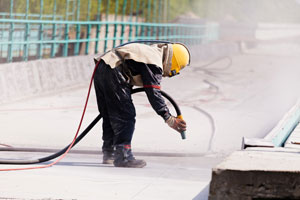
Dry ice blasting is one of the most effective and efficient ways to clean unwanted surfaces off industrial equipment and surfaces. But how much do you know about dry ice blasting? Here are some basics.
Q. What is dry ice blasting?
A. Dry ice blasting is a non-destructive way to clean and remove unwanted coatings from industrial surfaces using extremely cold (-109.3° F) dry ice pellets (the solid form of carbon dioxide) delivered at high speed via compressed air.
Q. What can dry ice blasting remove?
A. From paint, rust, adhesives and syrups to oils, powders, mold and bacteria, dry ice blasting will remove just about any surface contaminant.
Q. How does dry ice blasting work?
A. Fine dry ice particles are “blasted” onto a surface using a dry ice blasting machine (imagine a high-tech pressure washer that shoots dry ice rather than water). When these particles come in contact with an unwanted coating, the contaminants freeze and fracture; eventually, a combination of heat transfer, gas expansion, and impact force will remove the unwanted coatings.
Q. What are the advantages of dry ice blasting compared to other methods?
A. Dry ice blasting enjoys significant advantages over other cleaning methods like sand and soda blasting, water cleaning, and chemical cleanup. Here are just some of dry ice blasting advantages.
- It minimizes surface damage – Dry ice blasting is non-abrasive, non-flammable, and non-conductive, which means it won’t abrade, wear, pit, or erode equipment surfaces. Other methods of cleaning can damage surfaces and remove more than just unwanted debris. Control panels, glass, electrical wiring, and other delicate surfaces can all be safely cleaned with dry ice.
- It’s eco-friendly – Some or all of the media used in dry ice blasting can be left behind, flowing down public drains into sewer systems, lakes, and streams, or seeping into the soil. Dry ice blasting meets USDA, FDA and EPA guidelines and eliminates the expense of environmental cleanup.
- It’s safe for employees – With dry ice blasting, cleanup crews won’t be exposed to chemicals or grit media.
- It produces little secondary waste – With dry ice blasting, all you will need to clean is what you are trying to remove.
- It cleans better – Dry ice blasting simply does a better of job of cleaning equipment, both visually and at the microbe level.
- It doesn’t contaminate your equipment – Dry ice blasting leaves behind no water or chemical residue – which means no additional cleanup is needed.
- It gets everywhere – Dry ice blasting makes it easier to get into hard to reach nooks and crannies.
- It works quickly – Dry ice blasting works faster than other cleaning methods, which means less downtime.
- No disassembly is required – With dry ice blasting, your equipment can remain built and in place, which saves time and allows more frequent cleaning.
- It’s efficient – Dry ice blasting is not as labor intensive as cleaning with water, media, or chemicals.
Q. What industries use dry ice blasting?
A. Dry ice blasting is used across many industries, including but not limited to:
- automotive
- manufacturing
- industrial cleaning
- foundry/metal working
- petrochemical
- power generation
- food processing
- pulp and paper manufacture
- general maintenance
Whether you need to clean food processing equipment, electronics, electric motors, or just about any other type of industrial equipment, dry ice will do the job faster, safer, and more completely than just about any other method. Why not give it a try?
Need dry ice dry ice pellets in Rochester and Buffalo, NY? Irish Carbonic has them. Contact us today to learn more or place an order!
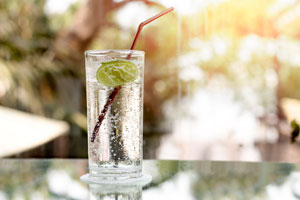
At this point, most of us are aware of the negative health impacts of drinking sugar-laden beverages. But what about other carbonated beverages, such as seltzer water, sparkling water and tonic water?
While some people claim that carbonation itself can cause problems ranging from tooth decay to weight gain, studies suggest otherwise. Let’s take a look.
A Carbonated Water Q&A
- Does carbonation cause calcium loss in bones?
No. While researchers in a 2006 study found that phosphorus-containing (and therefore calcium-depleting) cola beverages were associated with low bone mineral density in women, other carbonated beverages did not have the same effect. - Does carbonation cause tooth decay?
Again, no. A 2012 study confirmed that the concentration of carbon dioxide dissolved in water doesn’t harm the enamel of the teeth; however, carbonated water that contains citric acid or sugar does cause a reduction in enamel, according to a 2009 study. - Does carbonated water cause IBS?
A qualified no. While drinking carbonated water will not cause IBS, it may lead to bloating and gas, which can exacerbate IBS symptoms in some people. - Can carbonated water make you gain weight?
Possibly, though indirectly. While carbonated water is a far better choice than sugary beverages like soda, juice, or sweet tea, a 2018 study suggested that drinking carbonated water increased a hunger hormone called gherelin in male rats. Further study is needed in this area.
The bottom line
Always read the ingredient list on your beverages and keep a look out for additives like sodium and sugar to avoid negative consequences for your teeth and body. Want to keep your carbonated beverages healthy? Add combinations of fresh fruits, herbs, citrus, or cucumbers to plain carbonated water to spice things up!
Need beverage grade CO2 for your bar or restaurant? We’ve got it! Contact Irish Carbonic today to learn more about bulk CO2 deliveries in Buffalo and Rochester, NY!
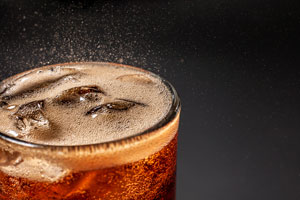
When it comes to buying bulk CO2 – especially for food or beverage use – quality really matters. But what exactly do we mean by “quality,” and are you getting it from your current CO2 supplier?
Let’s start with the easy stuff: CO2 grading. CO2 is graded based on the amount of impurities (such as ammonia, benzene, oxygen, carbon monoxide, and others) that it contains; the higher the grade, the fewer impurities your CO2 has.
CO2 Grading
To put some numbers on that:
| Grade | Purity |
| Research | 99.999 |
| Supercritical fluid | 99.998 |
| Laser | 99.95 |
| Anaerobic | 99.95 |
| Beverage | 99.9 |
| Food | 99.9 |
| Bone dry | 99.8 |
| Medical | 99.5 |
| Industrial | 99.5 |
As you can see, research grade tops the list. But one important detail to notice is the wide gap between Industrial grade CO2 and Food/Beverage grade CO2.
Last year, the Food and Drug Administration set a minimum standard of 99.9 percent purity for beverage grade CO2. That’s important information to know if you own a restaurant, bar, brewpub, stadium, or any other establishment that serves beverages, because not all CO2 is created equal!
Questions to ask your supplier
If you are currently receiving bulk CO2 from a supplier and are using it for a beverage application, there are two questions you need to ask:
- What grade CO2 are you selling me?
- Can you provide proof of that grade?
Make sure your gas provider can not only answer those questions immediately, but can also demonstrate the gas quality as well.
Get your beverage-grade CO2 from Irish Carbonic
At Irish Carbonic, we provide quality beverage grade CO2 backed by decades of delivery and sales experience. As the area’s leading independent supplier, we’ll get you the CO2 you need whether you’re a national or regional chain or a local independent brewpub.
We feature:
- Tank sizes to fit your usage
- Expert tech support
- Computerized forecasting to minimize downtime
- Expert, on-demand service
For bulk beverage grade CO2 delivery in Buffalo and Rochester – and much more – trust the pros at Irish Carbonic. Contact us to become an Irish Carbonic customer today!
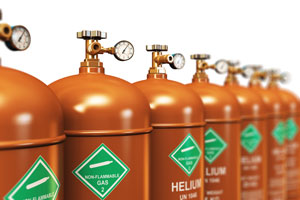
Admit it – at one time or another, most of us has sucked a little helium gas from a balloon at a party to get a laugh. But helium is much more than a falsetto-producing gas.
Helium – a.k.a. “He” on the periodic table – is the second most abundant element in the universe and a key element in the making of the energy that fuels our sun and stars. Commercially, helium’s story is a little less cosmic: typically, it is recovered from natural gas deposits (ho hum).
But what is helium actually used for, besides producing late-night laughs?
10 common applications for helium use in our world today:
- The largest use of helium is in cryogenics, where the element’s extremely low boiling point and low density make it a valuable tool for…well, freezing stuff (and people).
- Helium is used as a protective gas when growing silicon crystals for semiconductor applications and when producing titanium and zirconium.
- Helium is used as a shielding gas in the arc welding process, particularly when working with aluminum and copper.
- Helium is used in airships and commercial balloons to gain lift, since helium is lighter than air.
- Helium is used to condense hydrogen and oxygen to make rocket fuel.
- Helium can be added to oxygen tanks so that divers can breathe more easily and reduce the risk of narcosis and high-pressure nervous syndrome.
- Helium is also used as a heat transfer medium in some gas-cooled nuclear reactors.
- Helium dating is used to estimate the age of rocks that contain uranium and thorium.
- Helium is often used as a carrier gas in gas chromatography, where it can be used to test blood alcohol content, drug purity, food purity, and essential oil quality.
- Helium is used in solar telescopes to reduce the distortion caused by temperature fluctuations in between the lenses.
Not bad for the second lightest element in the universe!
Helium tank rentals in Rochester and Buffalo, NY
Of course, the most common and mundane use for helium among non-scientists like us is using it to fill balloons for a party; a helium tank rental or helium tank exchange from Irish Carbonic provides an economical way for you to bring the joy of balloons to your next event.
Helium tanks are available from 50 to 285 cubic feet – more than enough to fill enough balloons to make your guest of honor feel special, even in a socially distanced event.
Make your next party a lighter-than-air affair! Contact Irish Carbonic today for anything you need in helium tank rental in Buffalo and Rochester, NY.
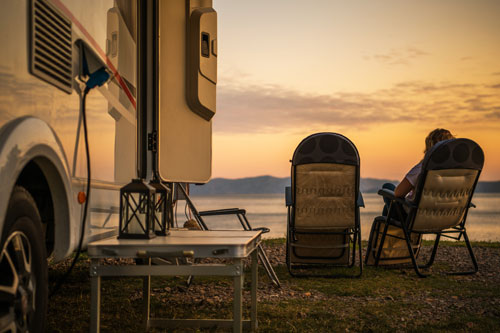
Let’s face it: we’re all a little stir crazy after three months of Zooming with relatives and staring at four walls. But how do we get out of the house in a safe way this summer?
Your best bet might be an RV or camping trip, according to some experts. If you’re ready to hit the road, be sure to pack your favorite food so it lasts. The best way to do that?
Use dry ice.
Dry ice makes it possible for you to transport frozen or perishable food in a sturdy, quality cooler, helping you to avoid the leaks, mess, and constant need for replenishment that comes with using regular ice (when dry ice melts, it simply turns to gas – no puddling involved!).
Dry ice tips for your summer RV or camping trip
- Always follow safe handling instructions for dry ice!
- Pre-chill your cooler. The night before you leave for your trip, put a sealed bag of regular ice in your cooler to chill things down before you pack it.
- Have enough on-hand. Plan on using 10 to 20 pounds of dry ice for every 24-hour period, depending upon the size of the ice chest. Dry Ice normally comes in 10-inch squares that weigh about 10 pounds each; plan to put one square per each 15 inches of ice chest length (that’s approximately two squares, weighing 20 pounds, for an average 40-quart cooler). For larger containers and longer travel times, multiply dry ice quantities by these rates.
- Pack frozen items first. Remember: Cold air SINKS, so put frozen meats and vegetables in the cooler first. These frozen items will take some extra time to thaw because they have been so cold, so plan accordingly.
- Pack essential items last. Keep milk, cheese, condiments, and any other foods you will need on top of the dry ice, where the air will be (slightly) warmer.
- Fill in the gaps. A full cooler will stay colder than a cooler with air pockets; one easy way to fill the voids is to place bottles of frozen water in between your food items. You can also use wadded newspaper.
- Choose your cooler wisely. The best storage container is a three-inch thick urethane insulated box.
- Insulate. Lining the inside of your ice chest with sheets of Styrofoam will increase the life of dry ice. Sublimation will vary depending on the temperature, air pressure and thickness of insulation; the more dry ice you have stored in the container, the longer it will last.
- Transport your dry ice safely. If transporting your dry ice by car or RV, try to insulate the ice chest with sleeping bags; this will make the dry ice last longer. If the dry ice is inside the car (not in the trunk) for more than 10 minutes, keep windows slightly open to avoid overexposure to CO2 (signs include rapid breathing, headache, and blue fingernails or lips). Open windows immediately if you or anyone in the car experiences these symptoms.
Need dry ice for your next RV or camping adventure? We have it! Visit one of our convenient locations to pick up yours today.
Protecting your food when electricity goes out
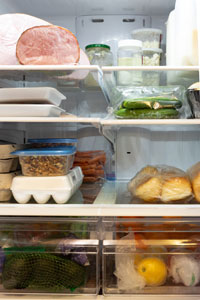
Believe it or not, summer is just weeks away – and summer can often mean severe weather and the power outages that come with it.
Once consequence of a power outage is food spoilage – a problem that can cost you hundreds of dollars and another trip to the market (not fun these days). The good news is you can keep that food protected with a little help from dry ice.
Be prepared
Leaving refrigerator and freezer doors shut during the early stages of a power outage will keep food cold for a day or two, depending on how full your appliance is – but the longer the power is out, the greater the risk for food spoilage.
Clocking in at -109 degrees F, dry ice can temporarily cool your refrigerator or freezer. During a power outage, place about 25 to 30 pounds of dry ice on the top shelf of the freezer; in a refrigerator, place the dry ice on the bottom shelf (you won’t need nearly as much dry ice for the refrigerator since the food will not have to be frozen). If your power outage lasts more than a few days, you will need more dry ice, which sublimates (turns into a gas) over time.
Always practice food safety
Once the power returns, it’s important to make sure your food has remained safe to eat. Never taste food to determine its safety!
Here’s a good rule of thumb, courtesy of foodsafety.gov:
“Thawed or partially thawed food in the freezer may be safely refrozen if it still contains ice crystals or is at 40 degrees or below. Partial thawing and refreezing may affect the quality of some food, but the food will be safe to eat.”
For more information about food safety during an emergency, visit the United States Department of Agriculture’s Keeping Food Safe During an Emergency page.
Need dry ice to keep food fresh for shipping, camping, or in an emergency? Irish Carbonic has plenty on hand. Contact us today to learn more.
Please note: At Irish Carbonic, your safety and comfort are always our priority. Please see our COVID-19 Service Update Page to learn more about how we are working to keep our your family and our crews safe while we provide our essential services in Buffalo, Rochester, and Ohio.

The science of carbonating drinks with beverage grade CO2 is pretty simple: When dissolved in liquid water, carbon dioxide gas will produce bubbles for as long as it is kept under pressure – take the top off a bottle of soda and it will go “flat.”
But why do carbonated drinks taste good?
Here’s the deal: When a bottle of carbonated beverage is opened, carbon dioxide gas reacts with water to form carbonic acid, giving the drink a slight acidity (which is often compounded by stronger acids added by the drink manufacturer). When carbonation bubbles waft toward the drinker’s nose, it also enhances the flavors of the drink, while bubbles in the mouth create a satisfying sensation on the tongue.
Did those fun facts wet your whistle? Here are five more.
Five more things you probably didn’t know about carbonated drinks
- Within a closed bottle, the amount of carbon in the air and in solution are in equilibrium. When the bottle is opened, this equilibrium is disrupted, with the liquid containing more CO2 than the air around it. To restore equilibrium, the dissolved carbon dioxide will escape into the atmosphere directly through the liquid’s surface via rising bubbles. When most of the gas is expelled, the solution reaches a new equilibrium by becoming flat.
- The speed at which carbon dioxide escapes a vessel is largely determined by how wide the surface area is in which the drink is contained: A wide mouth glass will lose CO2 gas more quickly than a narrow bottle or champagne flute.
- Within the glass, bubbles are formed through a process called heterogeneous nucleation (that is, when something changes from a liquid to a gas). Nucleation happens as a result of gas pockets forming in the solution due to imperfections in the glass; the more flawed or uneven the glass surface, the more bubbles (a reason why many vessels for carbonated drinks have uneven surfaces).
- In nature, carbonation sometimes occurs as the result of fermentation. Since carbon dioxide and alcohol are both natural products of fermentation, many alcoholic beverages become carbonated in the bottle.
- In most sodas, sparkling waters, and some beers and sparkling wines, carbon dioxide is forcefully dissolved into water with pressure. Sodas tend to be highly carbonated, but champagnes can often be up to 1.5 times stronger.
Need to learn more facts about carbonation for your bar or restaurant? We can help. Contact us today to learn more.
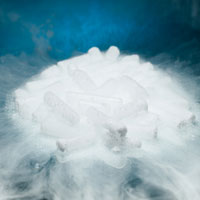
Think you know all the uses for dry ice? We bet you don’t! Here are 20 things you can do with dry ice, and we’re sure there are some we missed!
- Making plants grow faster – In small amounts, CO2 will increase the growth rate of plants. Allow the dry ice to sublimate near plants for 10-15 minutes daily.
- Removing bed bugs – Most of the chemicals used to control bed bugs are either banned or restricted; dry ice traps do the trick without the toxins.
- Preserving food during a power outage – Put your food on dry ice to keep it from spoiling during a power outage.
- Transporting perishable food for camping – Want to bring frozen food or perishables on your next camping trip? Bring along some dry ice and a cooler.
- Slowing hair loss during chemotherapy – Many cancer patients undergoing chemotherapy treatments use supercooled “cold caps” to reduce or prevent hair loss.
- Dry ice blasting – Similar to sandblasting, dry ice blasting uses a jet nozzle and compressed air to shoot small pellets of dry ice. The extreme cold causes targeted material to shrink, allowing for easier removal.
- Preserving game for hunters and fishermen – Use dry ice to minimize spoilage when you transport wild game.
- Flash freezing fish – Dry ice can be used to flash freeze fish, keeping them fresh for up to ten days longer than regular ice.
- Creating Halloween effects – When combined with hot tap water, dry ice will produce a spooky display of voluminous fog. Use a pound of dry ice for every 4L of hot water for 5-10 minutes of maximum effect.
- Freezing fruit – Place dry ice in the bottom of your cooler and the fruit directly on top. Close cooler and let fruits freeze for 20-30 minutes.
- Preserving a body for a funeral – Dry ice can be used to preserve the human body until the funeral; this method is less toxic for the environment and less costly for the family.
- Fighting fires – Dry ice can deplete oxygen in a space, which helps to control fires.
- Trapping mosquitos – Mosquitos associate carbon dioxide with the presence of blog (since animals exhale CO2); as dry ice sublimes to CO2 gas, it is equivalent to over 1,000 people breathing at the same time in close proximity. Place 5-10 pounds pieces of dry ice away from areas where people are gathered.
- Removing warts and moles – Doctors will often use dry ice to freeze and remove warts or other skin imperfections.
- Repairing plumbing pipes – Dry ice can be used to quickly freeze pipes, stopping the flow of water at the point of contact. This method is very useful if you are unable to access the main shutoff valve.
- Preserving grains and seeds – Bacteria, fungi, and insects can spoil a harvest, but sublimating dry ice will displace oxygen in a grain holder, keeping contents at low temperatures to kill fungi and bacteria.
- Fixing car dents – Allow the dent to sit in the sun to warm up (or use a blow dryer), then place a 10-pound slab of dry ice directly over the dent. The rapid cooling of the metal will pop the dent back to normal.
- Removing old floor tiles – Dry ice will freeze adhesive through vinyl and plastic tiles, breaking the adhesive bond and allowing you to remove tiles with far less effort.
- Fitting metal – Dry ice works wonders for metal shrinking and fitting.
- Theater effects – Use a fog machine or buckets of hot water and a fan to create mysterious fog effects.
Need dry ice for…well, just about anything? We’ve got it! To buy dry ice in Rochester or Buffalo, NY, trust the pros at Irish Carbonic. Contact us today to learn more!
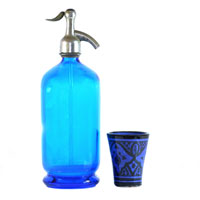
Carbonated water is a delicious way to wash down a great meal, especially once the warmer weather starts arriving in the coming months. But who wants to buy all that carbonated water in the store when you can easily make it at home?
Here are three ways to do it:
Using a seltzer bottle
Seltzer bottles have a tube, a main chamber, and a head with a dispensing leaver, along with a carbon dioxide charger to carbonate water (an alternative to a seltzer bottle that uses similar technology contains the carbon charger within a separate stand; SodaStream is one well-known brand of this type of carbonator).
To make seltzer with a seltzer bottle,
- Fill the bottle with tap water, leaving a bit of space for gas expansion.
- Insert the tube into the base, then screw the head onto the bottle.
- Insert a carbon dioxide cartridge in its holder and place it in the slot on the side of the head; the holder pierces the cartridge, allowing carbon dioxide to flow into the base through the tube.
- Shake the seltzer bottle for 10 to 15 seconds to disperse the carbon dioxide throughout the water.
- Remove the cartridge holder from the head, then squeeze the leaver to dispense your drink.
Using yeast
You can also make carbonated water using yeast; yeast works because it eats sugar, leaving carbon dioxide as a by-product. You’ll need about 1/8 tsp. of yeast to make a gallon of carbonated water, following these steps.
- Fill a gallon-sized bottle with a warm beverage you want to carbonate; the yeast will not work in cold water.
- Add yeast. You can use different kinds of yeast; if you can find it, champagne yeast is usually the best choice because it does not change the taste and stays at the bottom.
- Cap the bottle and shake it well.
- Place the bottle in a dark, warm place for a few days to ferment.
- Once it’s ready, refrigerate the bottle to halt the fermentation process. While you drink the beverage, pour it in a way that keeps yeast sediment at the bottom of the bottle.
Use dry ice
Dry ice is solid carbon dioxide – the gas used to make carbonated beverages – so you can also use it to make carbonated water. ALWAYS FOLLOW PROPER DRY ICE SAFETY INSTRUCTIONS WHEN HANDLING YOUR DRY ICE BLOCK.
To carbonate beverages, simple cut your dry ice block into ice-cube sized chunks, add them to a glass of your favorite beverage, and wait for it to dissolve (it will smoke as it does this, adding an extra element of “cool” to the proceedings).
Two or three ice-cubes worth of dry ice takes about four or five minutes to dissolve; make sure the cubes have completely disappeared before drinking.
Check out this video to see more dry ice drink carbonation in action!
Need dry ice for your business, or just for fun? Irish Carbonic has it. Contact us today to learn about our dry ice products, bulk CO2 deliveries, beverage grade CO2, and more for your bar, restaurant, or industrial business!




